In this week’s lesson, we learned a lot about the various inventors that contributed to the art of photography. It has been a fascinating study which reminded me of how far we have come in the last few hundred years. As it is with most inventions in the beginning, photography was only available to a select few at a high price initially, yet now it is available to all for practically free. We now take photos (and too many of them I might add) with our smart phones without a thought of how amazing this opportunity really is. However, it is nice to reflect on it and appreciate how far we have come.
(A lot more can be read about the history of photography, here: https://www.thoughtco.com/history-of-photography-and-the-camera-1992331)
For the first task of the week, we were asked to research one of the inventors who we believe has largely contributed to modern photography. To be honest, it was hard to choose because each person in history built the foundation for the next, so they were all important in their own way. However, I decided to choose George Eastman, the founder of Kodak.
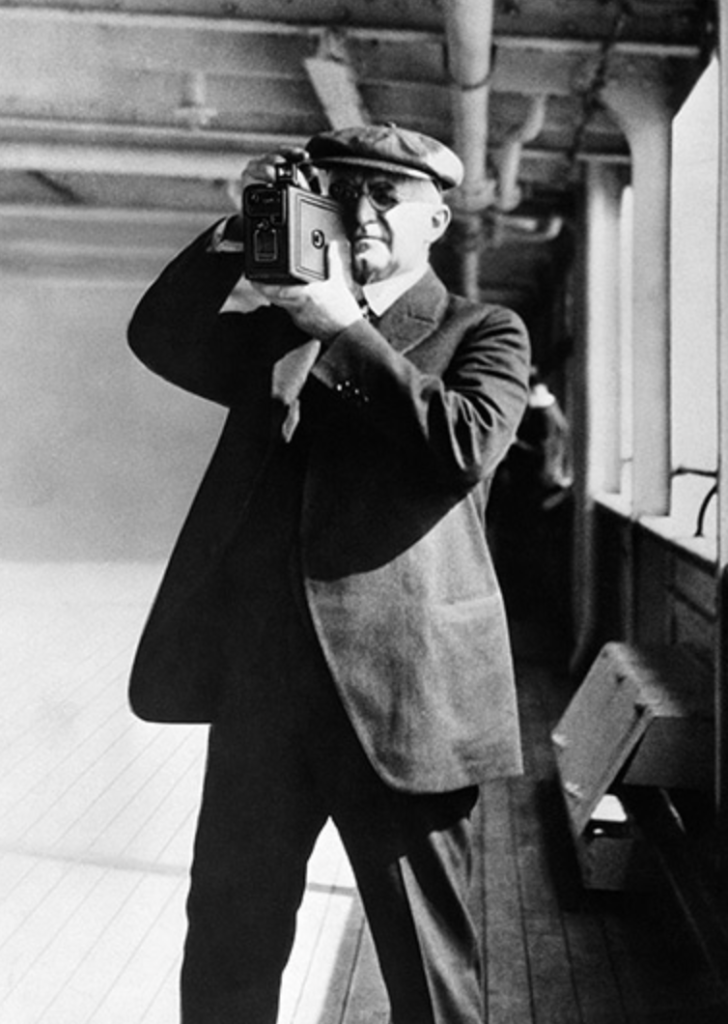
Why George Eastman?
I was interested in the history of his brand because I can relate to it. When I was a child, we associated photos with Kodak, and at the time, getting a new set of film rolls was considered a bit of a luxury in my family. Somehow, I cherish these rare photos of my childhood much more than the infinite amount of digital photos of today.
Also, I believe that George Eastman’s invention of Kodak is important because this brand took photography to the next level by putting a camera in the hands of everyday people. Many individuals who otherwise would not have had the means to work with this medium were given this opportunity. Of course, it was still not exactly cheap in the beginning, but it became reachable for many. This allowed for more experimentations, new perspectives, and both deliberate and accidental photographic discoveries. In addition, Kodak cameras and films made it possible to record a lot more of history in the form of images.
What does the name Kodak mean?
As to the brand name, Kodak, this was actually a name Eastman made up. He really liked the letter K because he thought it sounded strong and incisive so he wanted a name that both started and ended with K. He experimented with adding different letters in-between and eventually came up with Kodak. He wanted a name that was not associated with anything else (did not mean anything), that was easy to remember and hard to misspell. He understood the importance of branding and was successful in creating a brand that is still easily recognized today.
Brief history and contribution of George Eastman
Eastman’s life was interesting to read about as it had its fair share of successes and tragedies. I was intrigued to learn about his life as a boy and teenager and how he had to become the provider of his family at a young age to support his widowed mom and two sisters. It makes the history of Kodak even more impressive and valuable. However, my main focus will be to share about his contributions to photography.
After several years of cheap labor working for insurance firms, which was barely enough to cover expenses, he got a position as a junior clerk at the Rochester Savings Bank. This helped him to become more established which then allowed him to invest in some photography equipment. The idea came from a friend/coworker to record his upcoming vacation trip to Santo Domingo. He somehow never made it to this trip; however, he became absorbed in photographic experiments. He did not like how involved, inconvenient, impractical it all was (big, heavy, expensive equipments, glass plates, chemicals, etc.) so he set out to simplify the process.
He read about a new technology in a British journal which involved coating glass plates (which were then used to capture photographs) with gelatin emulsions. This substance stayed photo sensitive after it dried so the plates could be exposed as needed. This made the cumbersome process of preparing a wet plate for each photo much simpler. He began experimenting with this technique using a formula published in one of the journals. After three years of experiments, in 1880 he perfected the dry plate by inventing a new formula. In addition, he patented a machine that could make the plates in large numbers. Because he understood the business possibilities of his invention, he began manufacturing the plates for sale. Initially, his market was photographers so it wasn’t a lucrative enough business.
He kept looking for new exposure methods and in 1883 he came out with film on rolls, which was a gelatin coated paper; however, the paper was problematic. Along with his associate, he continued to experiment until they found a new material, cellulose. “It produced a cleaner image than paper and was easily spooled onto a film roller, making it compact. It proved to be the birth of modern camera film.” (Source: https://www.thoughtco.com/brownie-camera-1779181)
Eastman also realized that the real business potential was in wide distribution among everyday people rather than the supplying of photographers, so he focused on making it available to the public. In 1888, Kodak came out with the first camera which was pre-loaded with a film roll enough for 100 exposures. The slogan was “You press the button, we do the rest.”
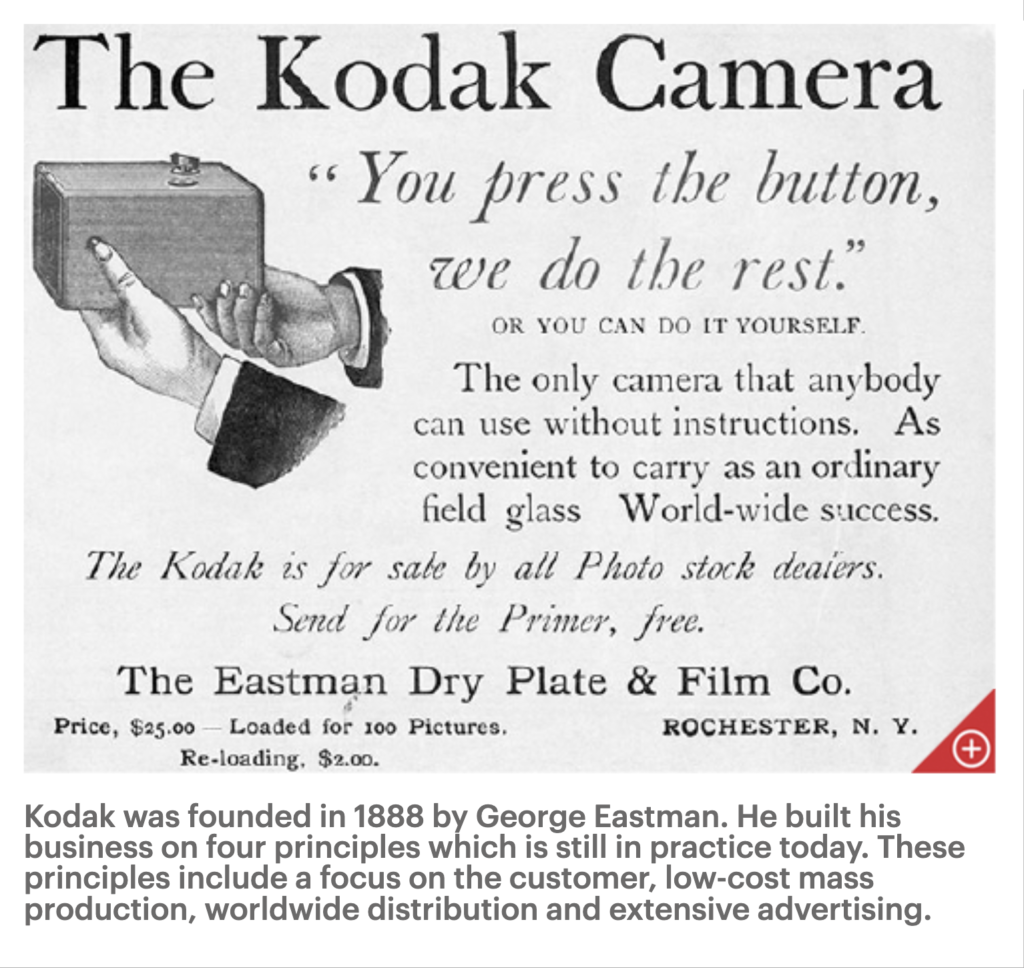
When the film was used up, the camera was sent back to Kodak in Rochester, NY, where they developed and printed the images and added a new roll of film for an additional cost. They were very intentional about their products meeting customer’s needs and concentrated on low cost, wide distribution, and lots of advertising.
In 1990, Kodak released the Brownie. This camera was simple enough to be used by children and it was offered at a much lower price. This was a huge success as it made the buying and handling of a camera even easier and cheaper, hence introducing a new era and further establishing the foundation of amateur photography.
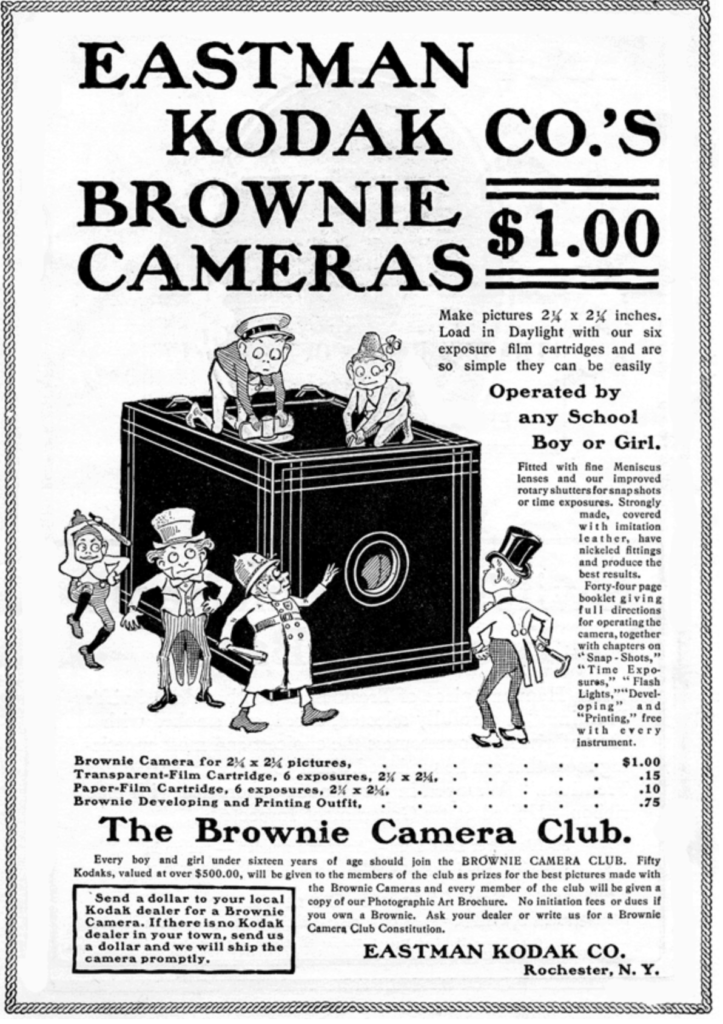
In conclusion, I believe Eastman’s successes had undoubtedly made him one of the main contributors to modern photography as the products of Kodak became not only foundational but lasting, and paved the way to the invention of the motion picture camera by Thomas Edison.
Sources:
https://www.kodak.com/en/company/page/george-eastman-history
https://www.biography.com/inventor/george-eastman
https://www.britannica.com/biography/George-Eastman
https://www.thoughtco.com/brownie-camera-1779181
https://clickamericana.com/media/photography/antique-kodak-brownie-cameras
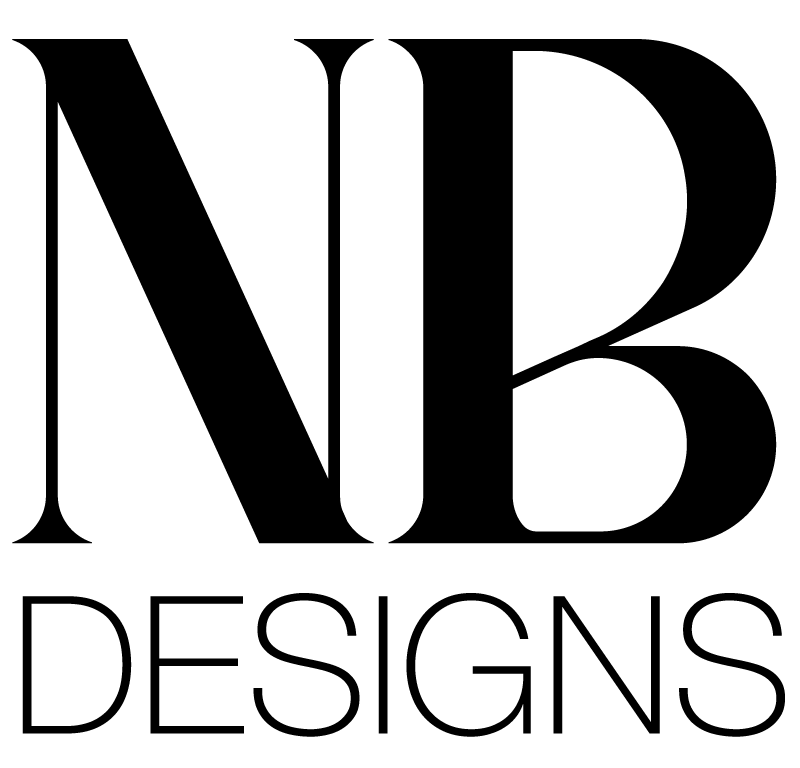
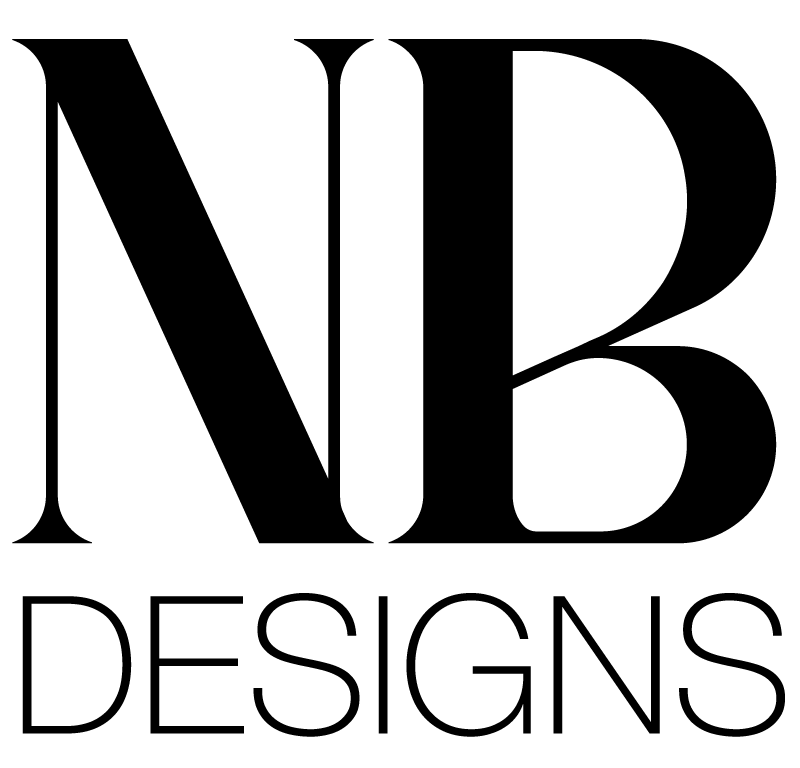
No responses yet